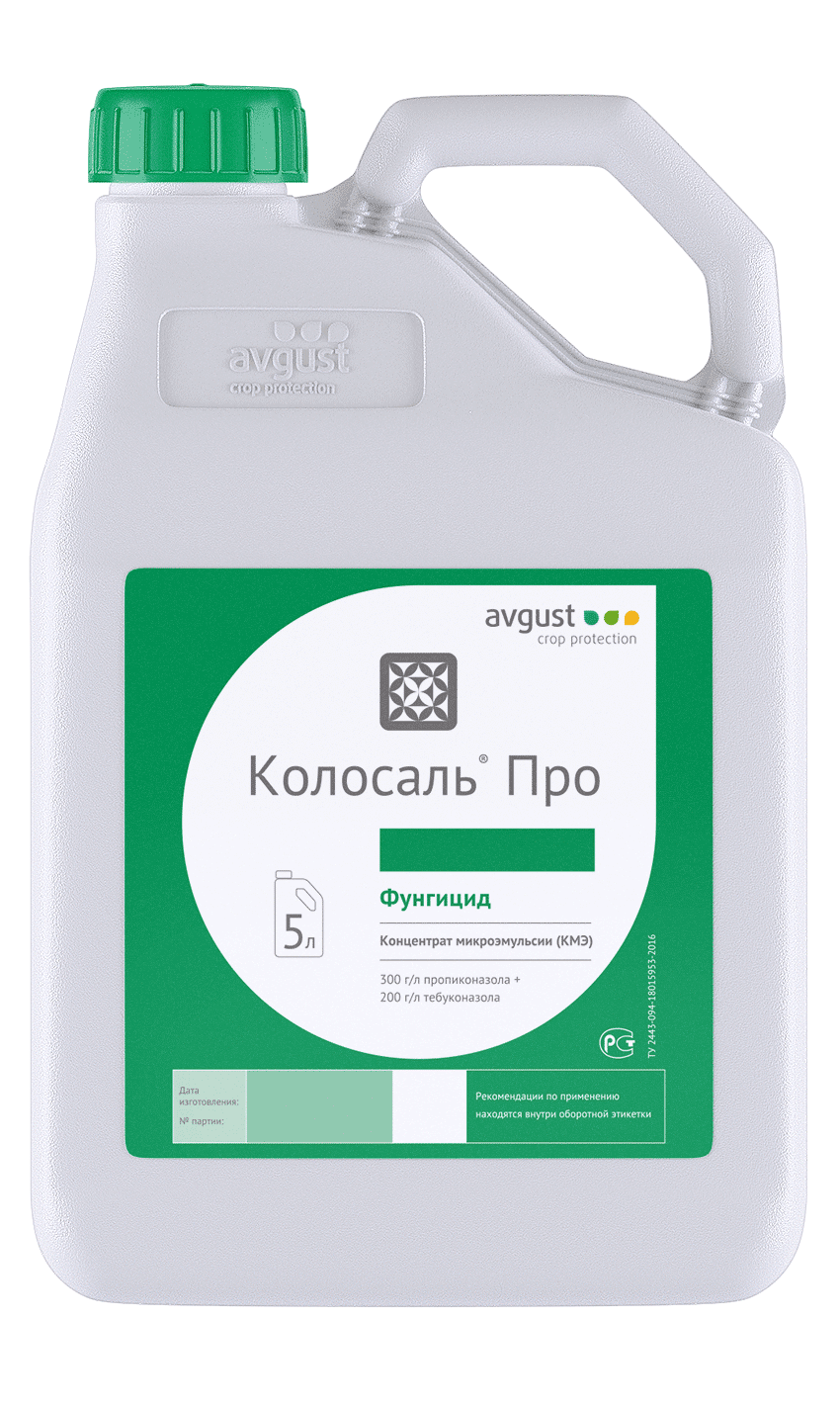
Kolosal Pro
propiconazole, 300 g/l+ tebuconazole, 200 g/l

propiconazole, 300 g/l+ tebuconazole, 200 g/l
Benefits of the drug:
• Adverse effects of a wide range of diseases
• High absorption power and perfect systemic features
* Rate of fungicide action
• With dual content and different solubility creates long-term protection.
Compatibility:
With insecticides from the august company, it is also compatible with many herbicides.
While stirring, Kolosal® Pro Spray bottle must be added last. Heavy weather under the conditions it is necessary to add an Allure blanket.
Form of preparation:
microemulsion concentrate. Surfactants specially selected for this and auxiliary substances system particle size Working fungicide with less than 200 nanometers ensures the production of the solution, these active substances are high in plants high in permeability and Colossal® Pro fungicide activity and rain resistance leads.
The effect is a mechanism:
How to take Tebuconazole and propiconazole the spectra of pathogenic microorganisms are different The yashil part of the cutting moves quickly through pipes and acropolis surfaces. Prevention of tubuconazole and davolovci tizimli the effects of ega and rust, Alternariasis and Fusariasis turlariga is located in the southern part of the city of Samaraly. Propiconazole prophylaxis, take care and
do not be influenced by ego, pathogens of sporalars and gas phases, thanks to him, schuding has made significant progress.
Schoeningdeck, influenced him Photosynthesis course and study intensive training
Duration of protection :
4-5 weeks old
Working fluid consumption:
for grain crops, sugar beets-300 l/ha, peas, alfalfa and lupine – 200-300 l/ha,
in rapeseed, soybeans, sunflowers and peas – 200 – 400 of
Working flu 1000 l/ha.
The speed of impact:
Fungicide within 2-4 hours after catching, the penetration of pathogens into the body of hogweed and scallop
allergy can provoke infection
Grain crops, sugar beets, grapes, rapeseed, soybeans, peas and other long-term protection of crops from a complex of diseases two-component systemic fungicide.
| Crop type | Type of disease | Spending standard l /ga | Processing number |
| Processing according to plant species | |||
| Spring and autumn wheat | Yellow and brown rust, septariosis, flour dew, pyrenophorosis | 0,3-0,4 | 1-2 |
| Spring and autumn barley | Yellow and brown rust, rhynchosporiasis, flour dew, perforated and dotted spotting | 0,3-0,4 | 1-2 |
| Sorghum | Red-black spot spotting | 0,3-0,4 | 1 |
| Sugar beet | Cercospora, powdery mildew, phomosis | 0,4-0,6 | 1-2 |
| Grapes | Oidium | 3-4 | |
| Spring and autumn raps | Alternarioz, un dew, fomoz | 0,4-0,6 | 1-2 |
| Shadow | Al’ternariosis, ascachitosis, anthracnose, septoriosis, cercosporosis |
0,4-0,6 | 1-2 |
| Peas | Ascachytosis, flour dew, anthracnose, rust | 0,4-0,6 | 1-2 |
| Sunflower | Famopsis, rust, Al’ternarioz, fomoz, white and gray rot |
0,4-0,6 | 2 |
| Fiber and fat linen | Anthracnose, powdery mildew, fusarium | 0,3-0,4 | 2 |